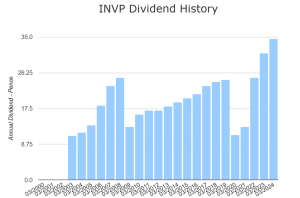SIPPs (Self-Invested Personal Pensions) are an amazing wealth-building tool. They provide tremendous benefits through both relief and immunity to certain taxes that can help propel a nest egg to new heights. So much so that even a small amount of money can grow into a large sum over time.
With that in mind, here’s how I’d aim to turn a £10k SIPP into a £100k one.
Please note that tax treatment depends on the individual circumstances of each client and may be subject to change in future. The content in this article is provided for information purposes only. It is not intended to be, neither does it constitute, any form of tax advice. Readers are responsible for carrying out their own due diligence and for obtaining professional advice before making any investment decisions.
Learning to walk before you can run
Investing requires capital. After all, stocks aren’t free, and investors need a reliable and stable source of money to fund a portfolio. The most common source of this capital is employment income. And getting into the habit of consistently putting money aside from a paycheck each month is a crucial step for long-term success.
Injecting small lump sums each month means investors can capitalise on buying opportunities as and when they appear. It also enables portfolios to remain diversified without having to sell shares in winning positions that are becoming concentrated.
But of course, putting savings to work in the stock market only builds wealth if the right stocks are picked. So how exactly do investors find winning companies to buy and hold for the long run?
Investing for success
One of the easiest ways to make money in the stock market over the long term is through an index fund. It allows investors to instantly replicate a benchmark like the FTSE 100 or FTSE 250, resulting in a highly diversified portfolio of the biggest businesses in the UK.
Historically, employing such tactics has generated returns of between 6% to 10%, depending on the period. And given this passive strategy puts a lot of portfolio management responsibilities on autopilot, it’s a proven low-effort way to build wealth over time.
Alternatively, investors can opt to pick stocks directly. This is a riskier approach that requires far more knowledge and emotional discipline. But when executed sucessfully, it can translate into significantly higher returns. So what’s the secret?
Narrowing down the search
Stock picking is a complex topic that requires quite a bit of nuance. But in my experience, a quick way to narrow down the list of potential winners is to look at a firm’s track record.
Let’s take a look at Alpha Group International (LSE:ALPH) as an example. The fintech enterprise has a long track record of consistently beating analyst expectations both financially and operationally speaking. This has compounded over the years, translating into an ever-increasing share price that has pushed it into the FTSE 250 earlier this year.
Five years ago, Alpha Group was a simple currency risk management service. Today, it’s evolved into a full-blown alternative banking solution that caters to niches ignored by traditional corporate banks.
Of course, having an exceptional track record doesn’t guarantee success. And there are still plenty of threats Alpha has to contend with, especially since it’s starting to grab the attention of rival firms with far deeper pockets. But by finding expectation-beating enterprises, investors are more likely to stumble upon terrific long-term winners.
Reaching £100k
Having £10k in a SIPP is a terrific starting point. That’s more than enough capital to build a diversified hand-picked portfolio. But how long would it take to reach six-figure territory?
The answer ultimately depends on how much money I save each month for investments and the return my portfolio generates. But if I were to put aside £500 each month at a 10% return, it would take just over eight years. And after considering tax relief, the timeline gets even shorter.
This post was originally published on Motley Fool







